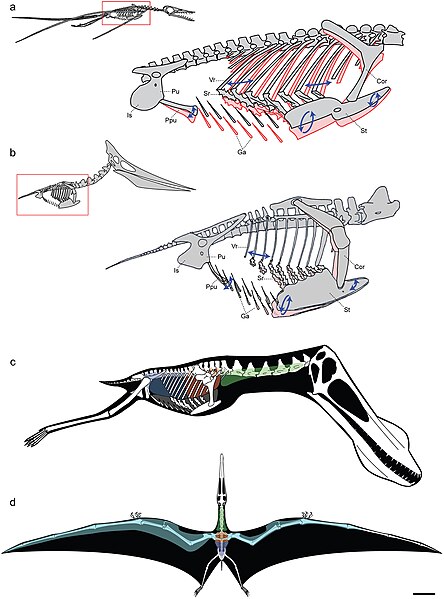ملف:Pterosaur respiratory system.jpg

حجم هذه المعاينة: 444 × 599 بكسل. الأبعاد الأخرى: 178 × 240 بكسل | 356 × 480 بكسل | 569 × 768 بكسل | 759 × 1٬024 بكسل | 1٬517 × 2٬048 بكسل | 3٬006 × 4٬057 بكسل.
الملف الأصلي (3٬006 × 4٬057 بكسل حجم الملف: 2٫52 ميجابايت، نوع MIME: image/jpeg)
تاريخ الملف
اضغط على زمن/تاريخ لرؤية الملف كما بدا في هذا الزمن.
| زمن/تاريخ | صورة مصغرة | الأبعاد | مستخدم | تعليق | |
|---|---|---|---|---|---|
| حالي | 21:17، 2 مارس 2009 |  | 3٬006 × 4٬057 (2٫52 ميجابايت) | FunkMonk | {{Information |Description=Models of ventilatory kinematics and the pulmonary air sac system of pterosaurs. a, Model of ventilatory kinematics in Rhamphorhynchus. Thoracic movement induced by the ventral intercostal musculature results in forward and out |
استخدام الملف
الصفحة التالية تستخدم هذا الملف:
الاستخدام العالمي للملف
الويكيات الأخرى التالية تستخدم هذا الملف:
- الاستخدام في en.wikipedia.org
- الاستخدام في es.wikipedia.org
- الاستخدام في it.wikipedia.org
- الاستخدام في ko.wikipedia.org
- الاستخدام في nl.wikipedia.org
- الاستخدام في oc.wikipedia.org
- الاستخدام في outreach.wikimedia.org
- الاستخدام في pt.wikipedia.org
- الاستخدام في ru.wikipedia.org
- الاستخدام في tr.wikipedia.org
- الاستخدام في vi.wikipedia.org
- الاستخدام في zh.wikipedia.org
